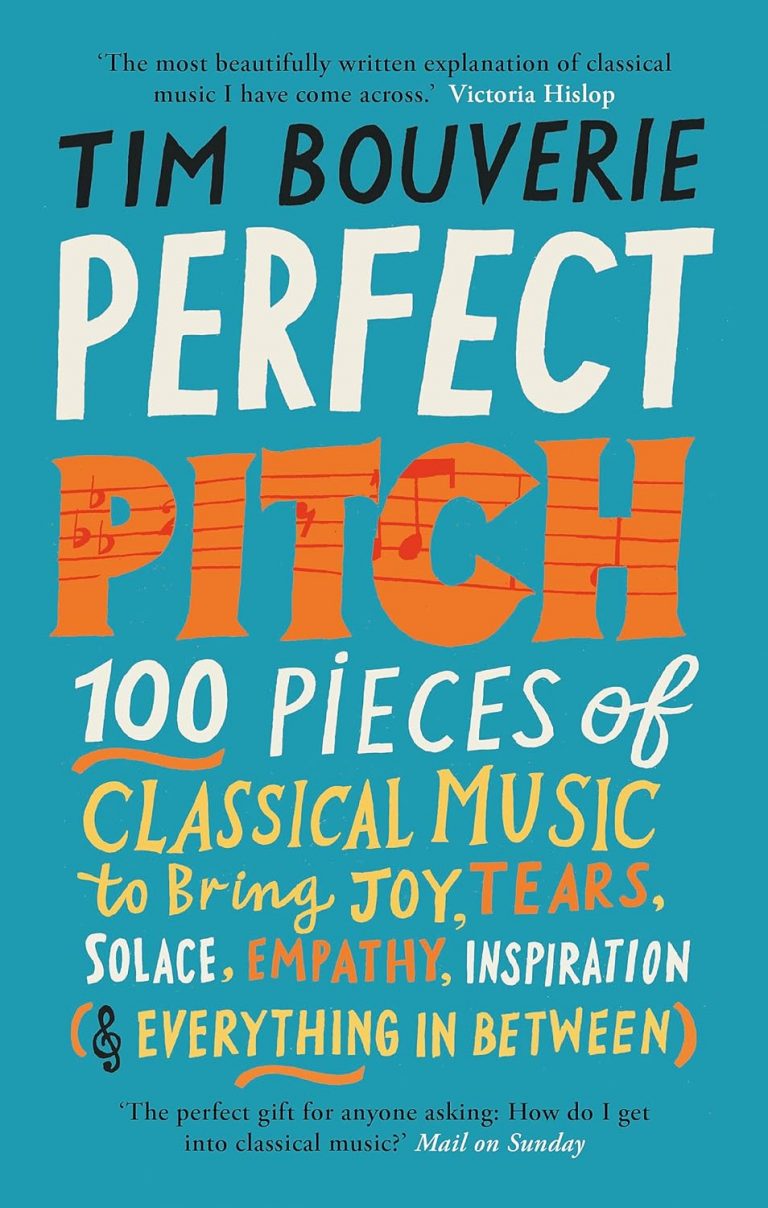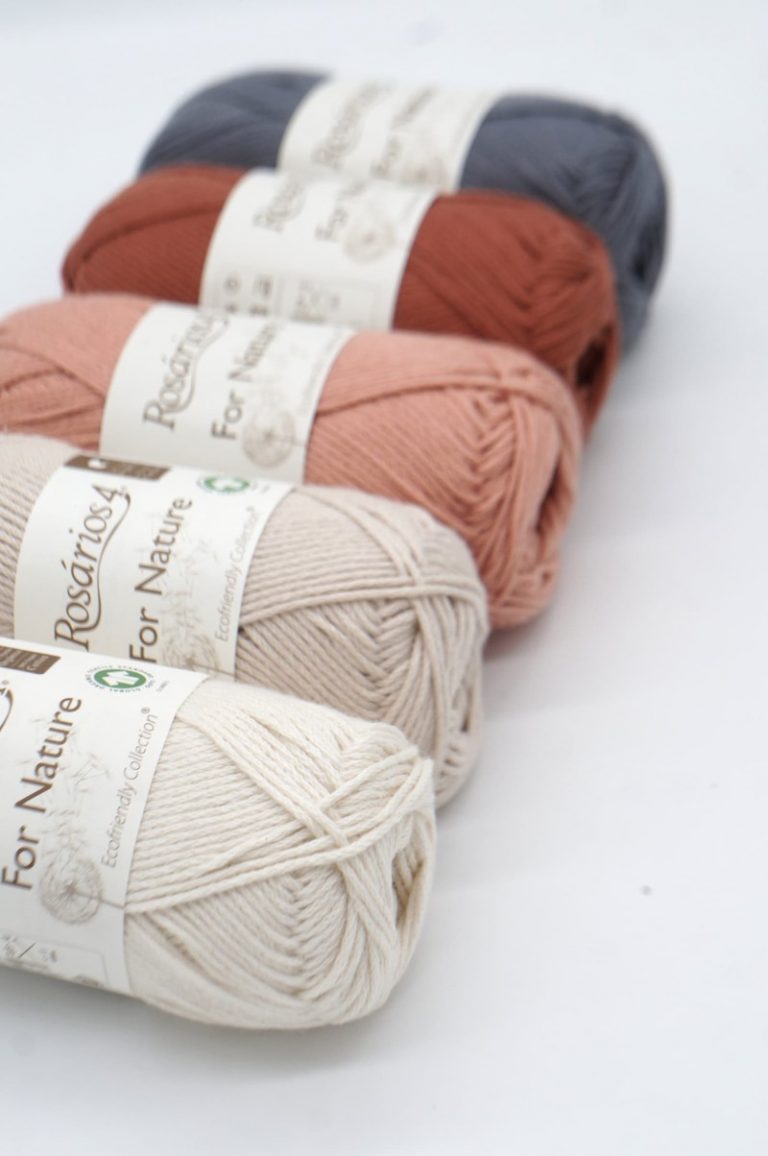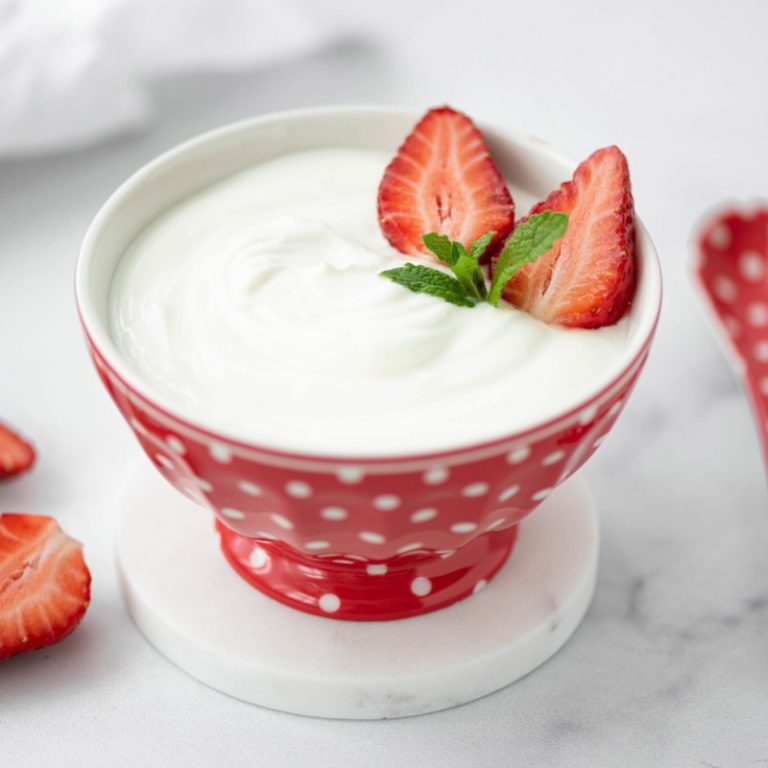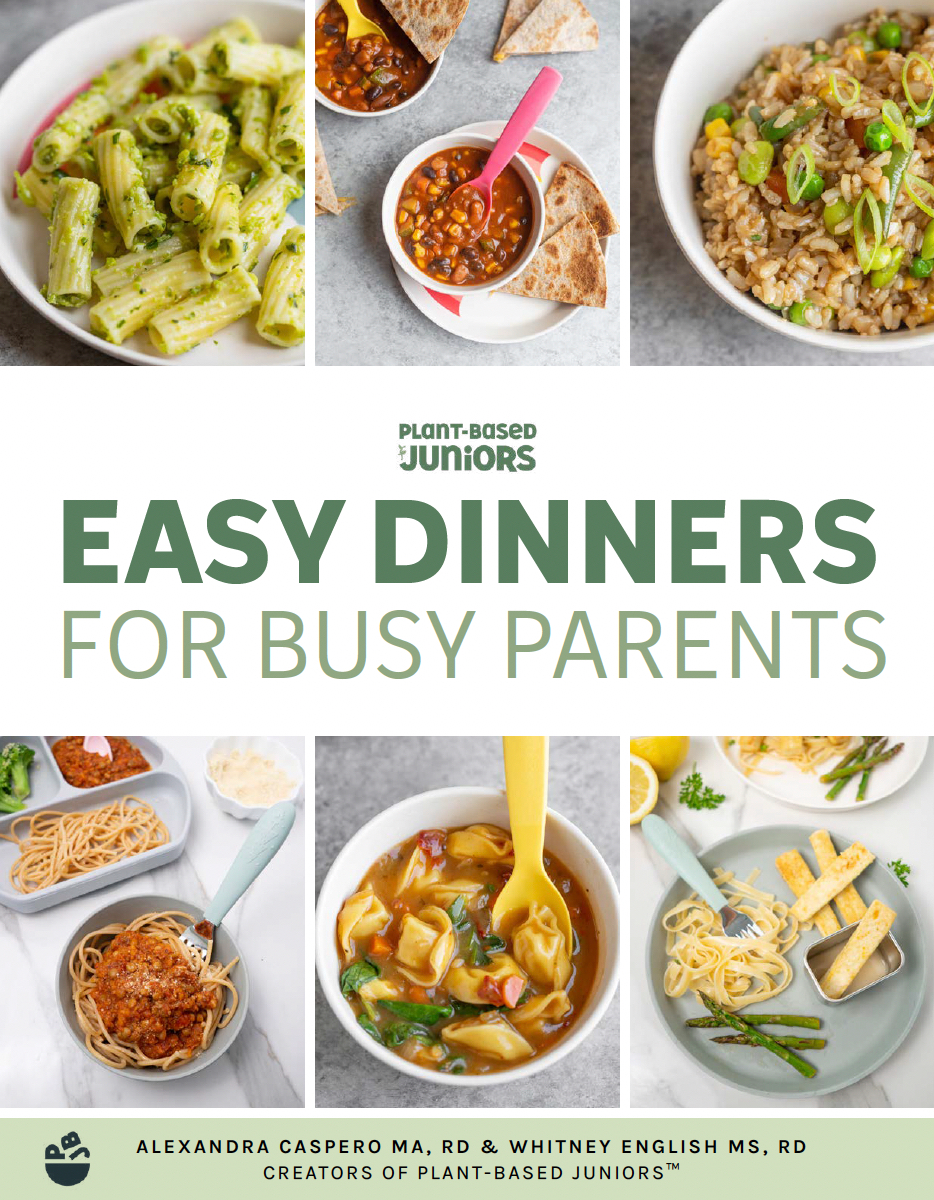
Although adults following plant-based diets is not , due to a lack of knowledge (often from GPs), many parents are unaware that it’s possible for children to be healthy without animal products, as long as things are done right.
Plant-based for children means meals built around fruits, vegetables, beans, lentils, whole grains, nuts, and seeds. It’s strange that this sometimes sends alarm bells, despite many children living on plastic-wrapped ready meals full of chemicals, fast foods, refined sugar and dairy hormones.
But concerns over protein, iron, calcium and vitamin B12 are valid. So here is some advice hones from experts, plus where to find good sustainable vegan supplements for children, to cover all the bases.
Before cooking, read our post for food safety for people and pets, which covers choking hazards to avoid, and tips for dealing with allergies (which of course is why some children are dairy-free anyway).
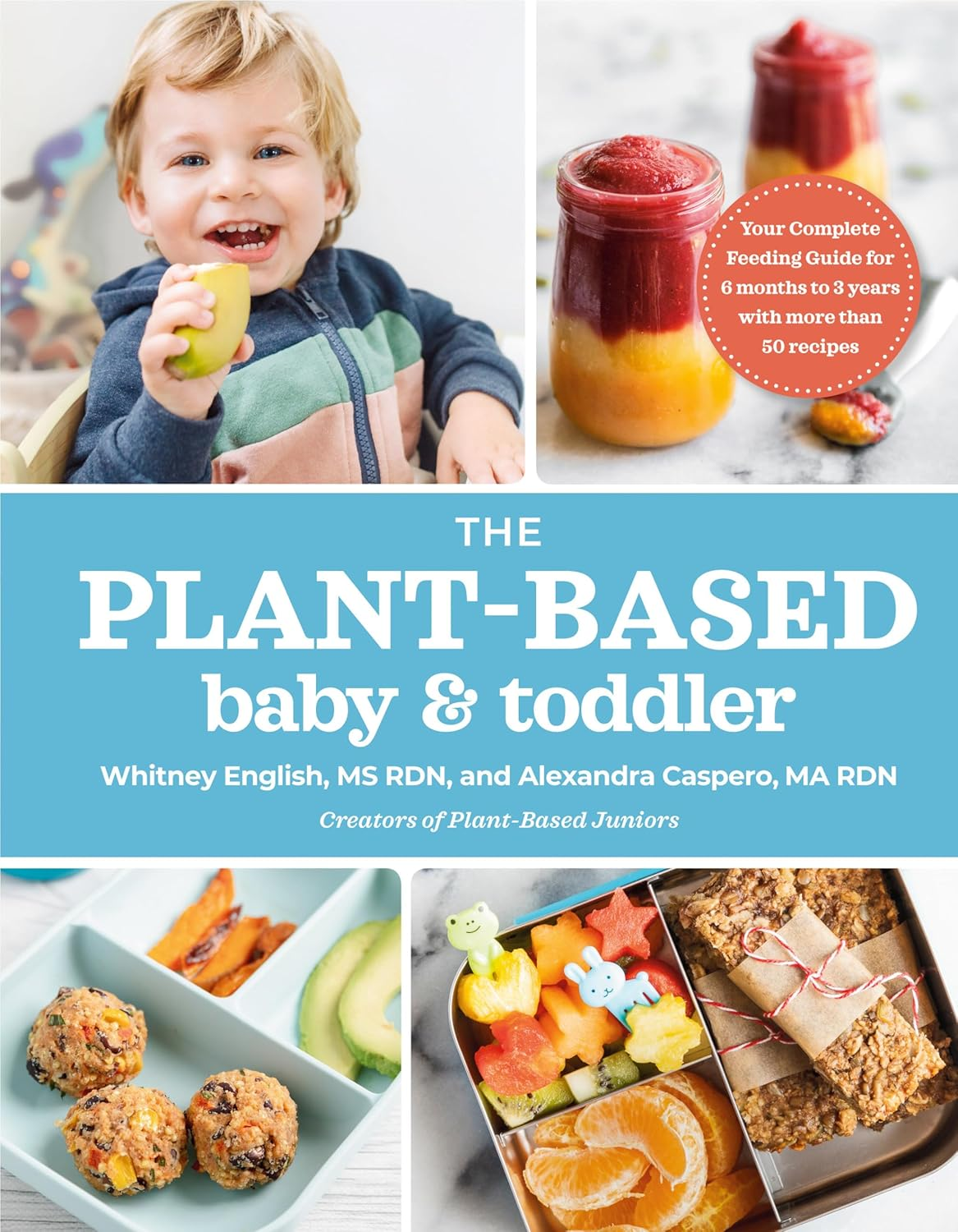
Plant Based Juniors (a site run for parents by two qualified nutritionists) has a good post on babies and the top 8 allergens (which account for around 90% of all allergens, the others being mustard or sesame seeds):
- Milk
- Eggs
- Soy
- Shellfish
- Fish
- Peanuts
- Tree nuts
- Wheat
The site is packed with good including introducing babies to foods (weaning), allergy advice, tips for picky eaters and even an online course in plant-based nutrition, to alleviate concerns.
Or you may prefer to read their book The Plant-Based Baby and Toddler, a complete feeding guide for 6 months to 3 years, with over 60 simple recipes.
Choking Hazards for Children & Pets
Choking hazards should be avoided for children and people with swallowing difficulties (and allergies). Also keep small toys off the kitchen floor where toddlers and pets could find them.
Learn how to help someone who is choking. Foods to avoid include:
- Nuts, Seeds & Nut/Seed Butters (avoid for under 5)
- Chia seeds (soak in liquid first, if used)
- Dry Bread, Crackers & Croutons
- Crumbly Foods (pies & biscuits)
- Peas, Grapes, Cherry Tomatoes, Cherries (even sliced)
- Carrot Sticks
- Sausages (slice lengthwise & again, for older children)
- Foods with Seeds (raspberries etc)
- Boiled Sweets
- Sticky Foods (some cheese, marshmallow, mochi)
- Tough Foods (steak, bacon, skin/bone/gristle)
- Stringy Foods ((beans, rhubarb)
- Floppy Foods (lettuce, cucumber, spinach)
- Chia seeds (mix with water first, if using for others)
Nutrients for Plant-Based Children
Children grow fast, so steady nutrition matters. Focus on a few nutrients that support growth, energy, bones, and brain health.
- Protein: Found in beans, lentils, tofu, organic soy yoghurt (and for older children – peas, nuts and seeds or butters). These all help build muscle and supports immune health. Aim for a source at each meal.
- Iron: Key for energy and focus. Get it from beans, chickpeas, lentils, tofu, spinach, kale, pumpkin seeds, and fortified cereals. Pair with vitamin C foods, such as oranges, berries, peppers, or kiwi, to boost absorption.
- Calcium: Important for bones and teeth. Choose fortified plant milks and yoghurts, calcium-set tofu, tahini, almonds, broccoli, and kale.
- Vitamin B12: Supports nerves and blood. For vegan children, use fortified foods or a supplement (see below), as B12 is only found in organic soil. So unless your child is ripping up the carrot and eating the soil with it (not recommended) it’s best to use supplements.
- Omega-3s: Helpful for brain and eye health. Again you can find this in nuts and seeds, but for younger children who can’t eat them (or for allergies), ensure a supplement contains it).
Simple intake basics for ages 4 to 12:
- Include protein at breakfast, lunch, and dinner.
- Offer 2 to 3 calcium-rich servings daily, such as a glass of fortified plant milk or a yoghurt pot.
- Add iron-rich foods most days, and pair with vitamin C.
- Give B12 daily through fortified foods, or use a supplement if your child is vegan.
- Add a small daily source of omega-3, such as 1 to 2 teaspoons of ground flaxseed.
If you have concerns about growth, energy, or restricted diets, speak to your GP or a registered dietitian.
Boosting Protein and Iron Intake Easily
- Lentil soup with toast soldiers: Blend red lentils into a smooth soup. Serve with wholemeal toast and a side of cherry tomatoes for vitamin C.
- Peanut butter (for older children) on toast: Add banana slices. Swap for almond or sunflower seed butter if needed.
- Spinach smoothie: Blend spinach with frozen mango, oat milk, and a spoon of oats. It tastes sweet and soft, and counts as iron plus vitamin C.
- Chickpea mash: Mash chickpeas with olive oil, lemon, and a pinch of salt. Spread in wraps with grated carrot and cucumber.
Portion ideas for school-aged children:
- Beans or lentils, half to one cup cooked.
- Nut or seed butter, one to two tablespoons.
- Tofu, 75 to 100 grams.
- Fortified cereal, one small bowl.
Early signs your child needs more iron or protein may include tiredness, pale skin, frequent infections, or low appetite. Keep an eye on growth and mood, and ask your GP if you are unsure.
Getting Calcium and Vitamin B12 Without Dairy
Fortified plant milks and yoghurts make calcium easy. Check labels for at least 120 mg calcium per 100 ml and added vitamin D and B12.
- Plant milks: Fortified oat, soya, or almond milk on cereal, in porridge, or smoothies.
- Greens: Kale tossed into pasta, broccoli florets with dinner, pak choi in stir-fries.
- Tofu: Look for calcium-set tofu. Stir-fry, bake, or crumble into scrambled tofu.
Simple Meal Ideas for Busy Families
Build meals that are quick, colourful, and affordable. Use seasonal produce, such as apples, berries, carrots, parsnips, cabbage, leeks, and peas. Involve children in washing veg, stirring sauces, or choosing toppings.
Breakfast ideas:
- Overnight oats with berries
- Beans on toast with grilled tomatoes.
- Smoothie with spinach, banana, and fortified milk.
Lunchbox ideas:
- Hummus and veg wrap with a piece of fruit.
- Pasta salad with peas, sweetcorn, and olive oil.
- Bean and rice salad with lemon dressing.
Dinner ideas:
- Veggie stir-fry with tofu, broccoli, and brown rice.
- Bean burgers with sweet potato wedges and coleslaw.
- Lentil bolognese with wholewheat spaghetti.
Allergy swaps:
- Nut-free: use seed butters, such as sunflower or tahini.
- Gluten-free: try oats labelled gluten-free, brown rice, and corn wraps.
- Soya-free: use chickpeas, lentils, and pea-based options.
Fun Breakfasts to Start the Day Right
- Banana chia pancakes: Mash 1 ripe banana. Stir in 1 tablespoon chia seeds, 60 g oats, 120 ml fortified plant milk, and a pinch of cinnamon. Fry small rounds in a little oil for 2 to 3 minutes each side. Serve with berries. Perk, fibre, omega-3, and a calcium boost if you use fortified milk.
- Green smoothie bowl: Blend 1 frozen banana, a handful of spinach, 150 ml fortified soya milk, and 1 tablespoon peanut butter. Top with sliced strawberries and a spoon of granola. Ready in under 10 minutes, steady energy without a sugar crash.
Packed Lunches Kids Will Actually Eat
- Falafel pittas: Fill mini pittas with shop-bought or homemade falafel, cucumber, grated carrot, and tahini yoghurt. Tip, wrap in greaseproof paper to keep them neat.
- Quinoa rainbow salad: Cook quinoa and cool. Mix with sweetcorn, peas, cherry tomatoes, and a splash of olive oil and lemon. Add pumpkin seeds for crunch and iron. Pack with fruit and a small treat like dark chocolate buttons.
- Hummus wrap: Wholemeal wrap, hummus, roasted peppers, and spinach. Roll tight, slice into pinwheels for little hands.
Quick Recipes the Whole Family Will Eat
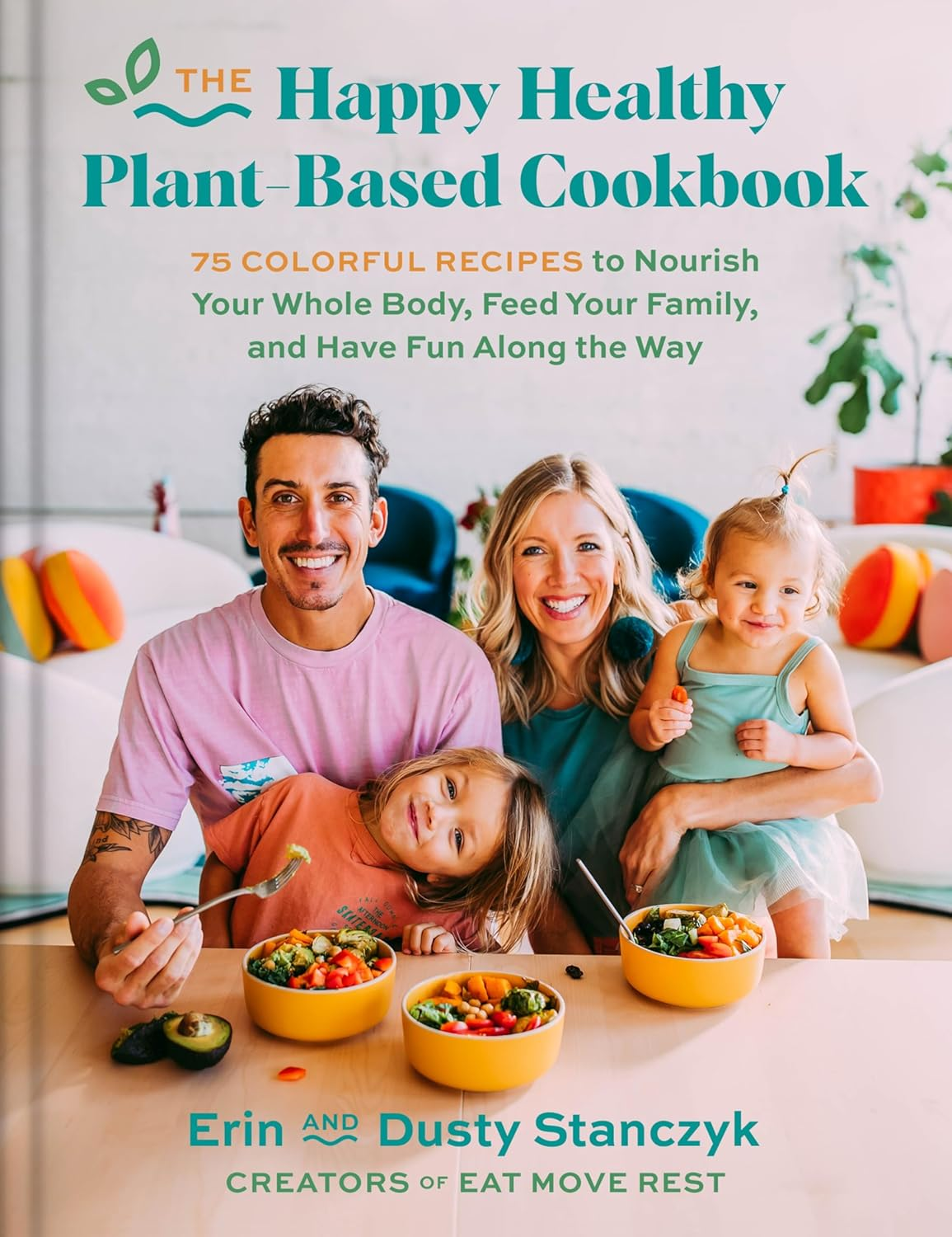
- Speedy Lentil Bolognese
- Ingredients: 1 onion, 2 carrots, 2 garlic cloves, 1 teaspoon dried oregano, 1 tablespoon olive oil, 1 tin chopped tomatoes, 1 tin lentils, 1 tablespoon tomato purée, 150 ml water, salt and pepper, wholewheat spaghetti.
- Steps: Fry onion, carrots, and garlic in oil for 5 minutes. Add oregano, tomatoes, lentils, purée, and water. Simmer for 10 minutes. Season and serve over cooked spaghetti.
- Perks: Protein, iron, fibre, and budget friendly.
- Tofu Veggie Stir-Fry
- Ingredients: 200 g firm tofu, 1 tablespoon soy sauce, 1 tablespoon cornflour, 1 tablespoon oil, broccoli florets, sliced peppers, peas, 2 garlic cloves, ginger, cooked brown rice.
- Steps: Toss tofu in soy sauce and cornflour. Fry until crisp. Add veg, garlic, and ginger. Stir-fry 5 minutes. Serve with rice.
- Perks: Calcium if using calcium-set tofu, vitamin C from peppers.
- Creamy Bean Wraps
- Ingredients: 1 tin cannellini beans, 1 tablespoon tahini, lemon juice, pinch of salt, grated carrot, lettuce, wholemeal wraps.
- Steps: Mash beans with tahini and lemon. Spread on wraps, top with carrot and lettuce, roll and slice.
- Perks: Protein, calcium from tahini, simple lunchbox win.
Sample weekly menu outline:
- Monday: Overnight oats, hummus wrap, lentil bolognese.
- Tuesday: Beans on toast, quinoa salad, veggie stir-fry.
- Wednesday: Smoothie bowl, falafel pitta, baked potatoes with beans and corn.
- Thursday: Banana pancakes, pasta salad, bean chilli with rice.
- Friday: Porridge with berries, leftovers, veggie fajitas.
- Saturday: Granola with yoghurt, soup and toast, homemade pizza with veg.
- Sunday: Scrambled tofu on toast, roasted veg couscous, bean burgers.
Dealing with Picky Eaters and Food Refusals

Gentle steps work best. Offer a tiny taste alongside well-liked foods. Praise effort, not empty plates. Let children choose a veg at the market, wash it, and help chop soft parts with a butter knife.
The Fussy Flamingo is a book to teach children that it’s not always good to be fussy. As you may know, flamingos are pink due to eating shrimp. But this little flamingo does not wan to eat shrimp, but then realises if he doesn’t, he will stay grey for the rest of his life!
Ideas that tend to work:
- Hide and reveal: Blend spinach into pasta sauce, then show the leaves next time in small strips.
- Choice and control: Offer two veg options, both acceptable to you.
- Repeat and relax: Serve new foods often in small amounts, with no pressure.
Many parents report wins with tomato soups boosted with red lentils, smoothies with a handful of oats and seeds, or tacos where kids fill their own. Small steps build trust and taste.
Vegan Supplements for Children
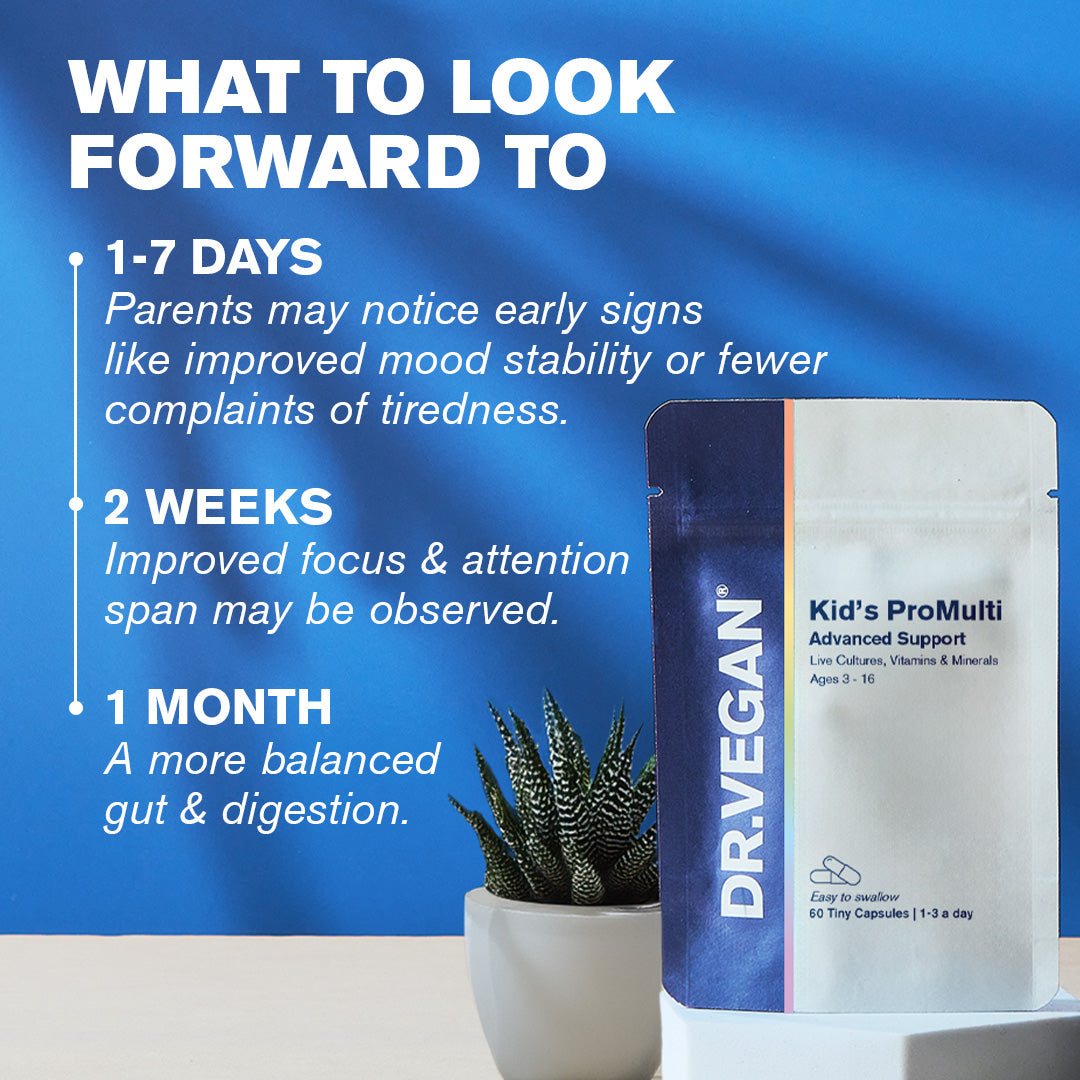
Dr Vegan’s Kids Protmulti (for ages 3 to 16) provides broad support in one tiny capsule. It brings together 25 active nutrients, including two friendly bacteria strains, in a vegan, additive-free formula. It suits picky eaters, busy schedules and growing bodies, and it respects sensitive tummies.
Always check with your GP before taking supplements, if pregnant/nursing or on other medication or supplements. Keep away from young children and pets.
Kid’s ProMulti is designed to protect against common nutrient gaps while supporting whole-body health.
- Hair, skin and nails: Antioxidants like vitamin E and vitamin C help protect cells, while biotin and zinc back healthy skin and hair. This is useful during growth spurts when needs climb.
- Energy: Iron supports oxygen transport, which helps reduce tiredness. B vitamins help the body release energy from food. Parents often notice better stamina on busy school days.
- Bones and teeth: Vitamin D3 and K2 help with calcium use in the body, while magnesium has a role in bone structure. This matters for fast-growing children.
- Brain and mental performance: B vitamins support mental performance and concentration. Choline contributes to normal brain function. Together these nutrients help with focus during lessons and homework.
- Digestion: Two live strains, Lactobacillus acidophilus and Lactobacillus rhamnosus, support gut comfort and nutrient absorption. A settled gut can make mealtimes easier and reduce tummy complaints.
- Immunity: Vitamin C, vitamin D and zinc support the immune system. This is particularly helpful during winter and at the start of school terms.
- Joints and movement: Magnesium and manganese contribute to normal connective tissue and muscle function, which supports active play and sport.
Flexible Dosing and Easy Administration for All Ages
- Age 3 to 6 (1 daily capsule)
- Age 7 to 13 (2 daily capsules)
- Age 14 plus (3 daily capsules)
- Take with food for comfort.
- If your child dislikes capsules, open and sprinkle the contents onto cold or lukewarm food or drinks. Heat can damage probiotics.
- Store away from heat and moisture. Keep clear of radiators, kettles and steamy bathrooms. A frost-free fridge is suitable if you are unsure.
These steps protect the live bacteria and make daily use easy, even for picky eaters.
Vegums – Chewable Vegan Supplement for Kids
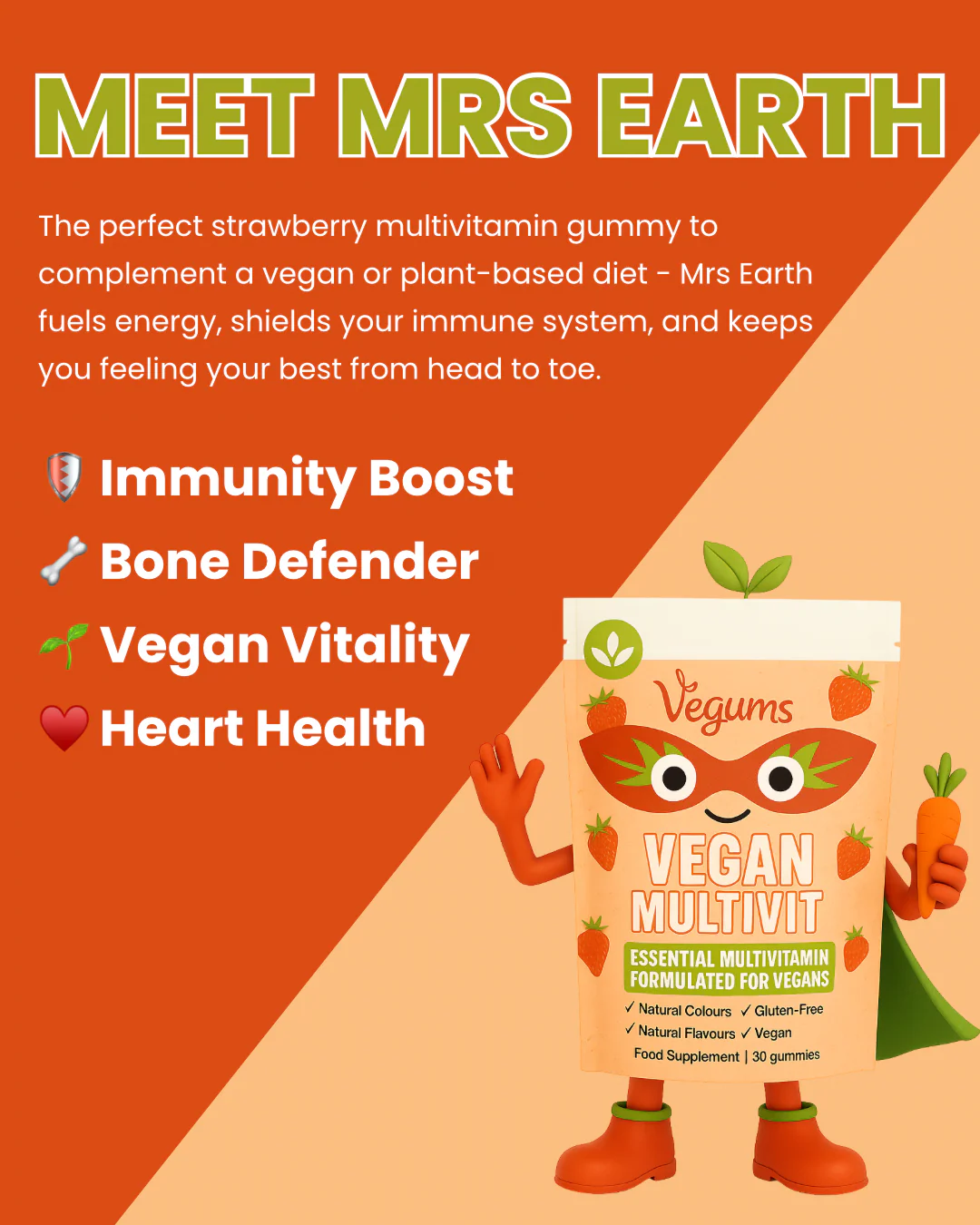
Vegums is a brand of quality vegan supplements founded by two pharmacists, and also offers a children’s range in sustainable packaging. Most are the same as the adult supplements, children simply take a lower dose.
These look and taste like sweets, so keep away from younger children and pets.
The range includes:
A to Z Multivitamin is for children age 3 to 11 (and for adults from 12 years, the dose is larger). The strawberry multivitamin is also available in a sugar-free version.
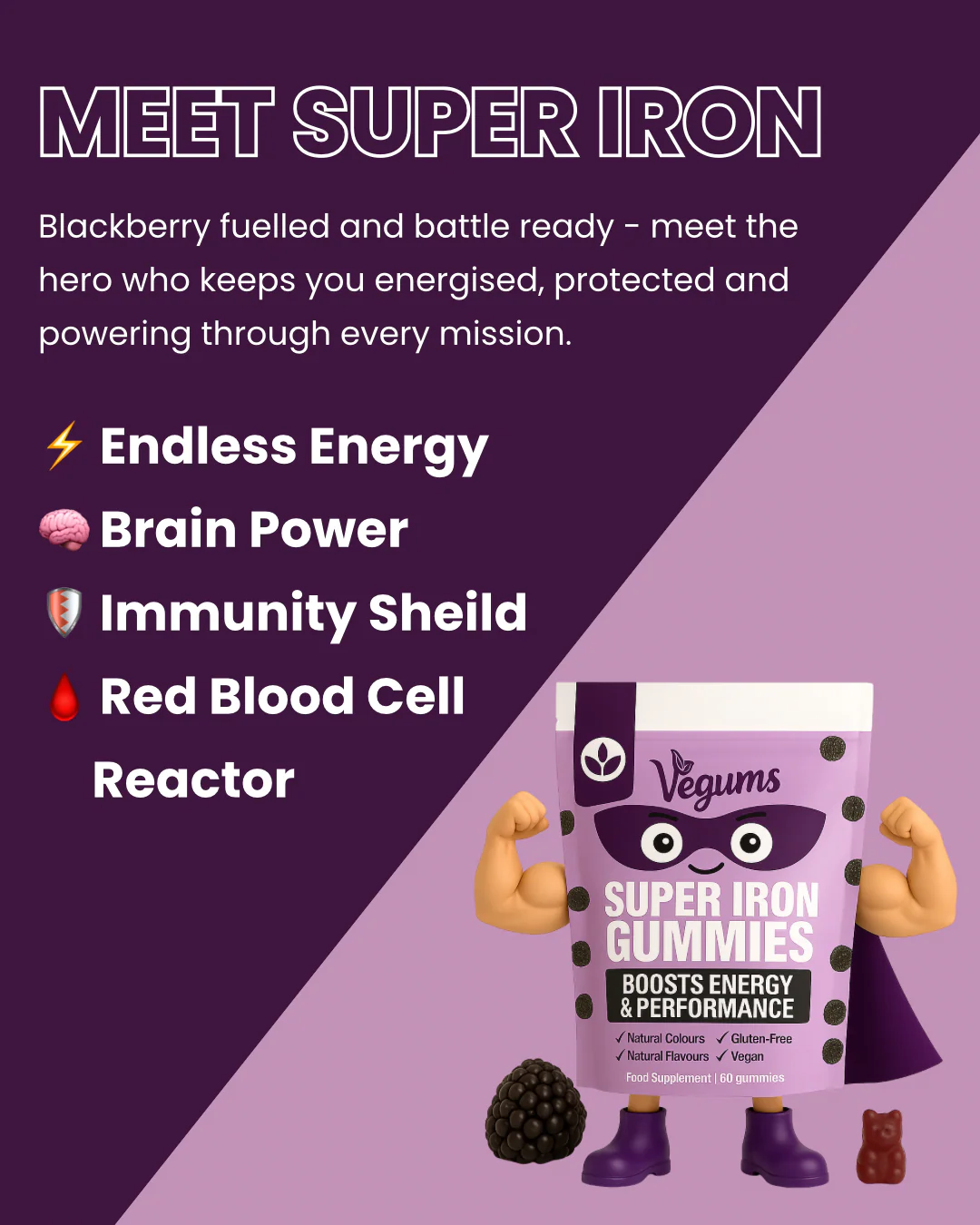
- Super Iron Gummies (for children are tired or with low iron) and for good hair, skin and nails.
- Fish-Free Omega Gummies (for brain, vision and overall development), good for children with tired eyes, wobbly knees or silly brain – and hate the taste of fish!
- Wholefruit Probiotic (for good gut health for grumpy tummies)
- Wholefruit Vitamin C (citrus-flavoured for immunity boost) for tired children, or those who keep getting the sniffles.
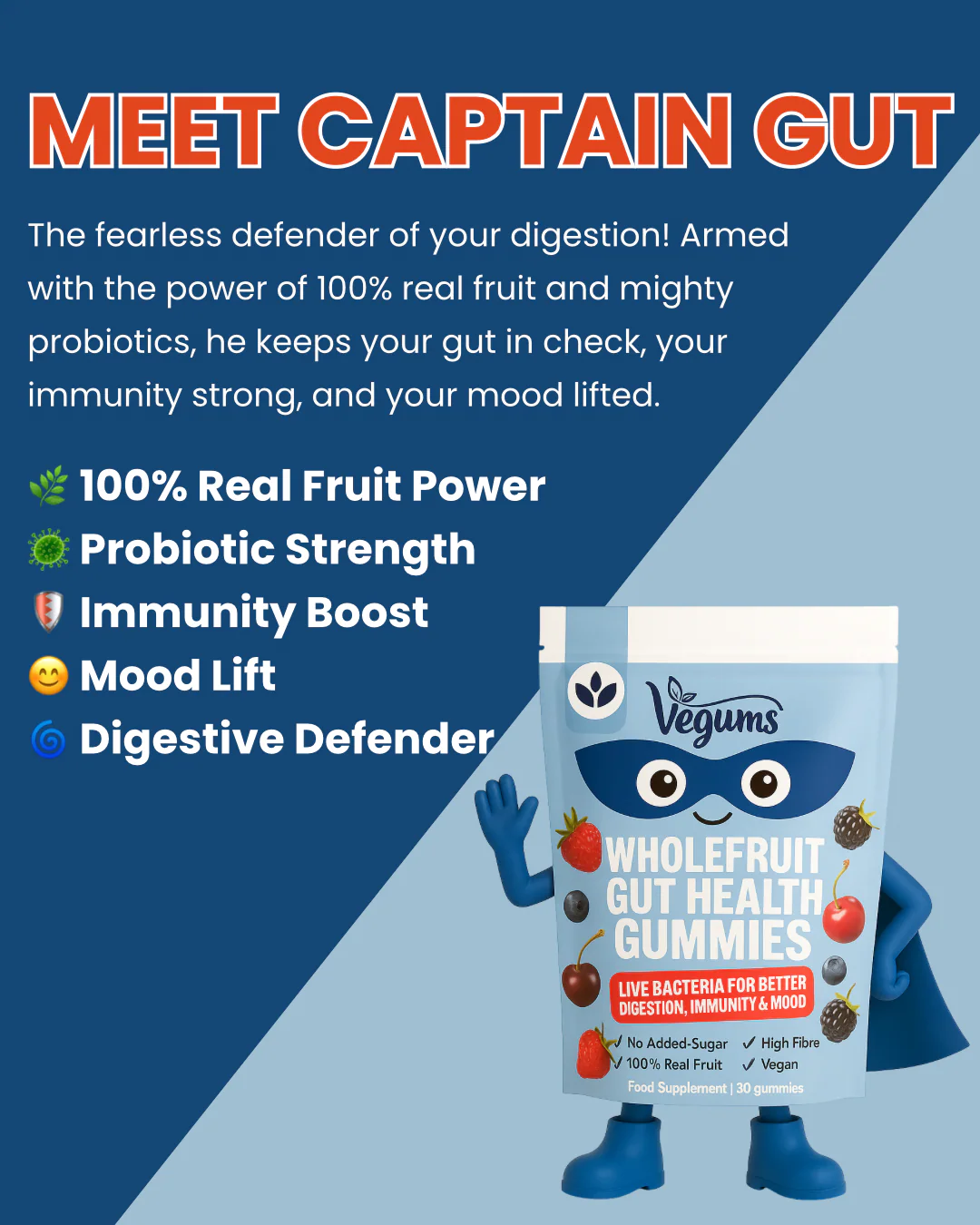
Government Advice on Vegan Children?
Obviously with children you want to ensure all information is safe, and not with vested interests. NHS website has good info for vegan children, which is kind of the same as above, but more extensive. It’s also regularly reviewed, to ensure it’s kept up-to-date with the latest research.
Some countries abroad (including France) have courted controversy by banning schools from feeding children vegan food, but this seems more to do with vested farming interests, than nutrition. The law has now been watered down substantially, in a country with a surprisingly large number of vegan parents.
In fact, the city of Lyon (the world gastronomy capital with many restaurants carrying Michelin stars) has recently voted to take animal foods off school menus, in line with the latest research.
Our Lady of Sion School in Sussex is entirely plant-based, using a local catering company. And Forest Green Kitchen is a plant-based catering company for schools (and football clubs) that is gaining ground.
What About Reports of Ill Vegan Children?
Sadly, sometimes we read of seriously malnourished vegan children. This is course hits the meat-eating-loving media headlines. But usually when you read these stories, they are very rare cases of parents who have taken their eating to extreme (raw foodists, parents who feed nut milks to their children and not much else etc).
In most cases, plant-based children on good diets with sensible supplements and regular exercise, are thriving. Do your research, find a plant-based health professional if concerned, and know your facts (this is the best ‘defence’ if you get smart remarks from other parents, teachers or even doctors).

